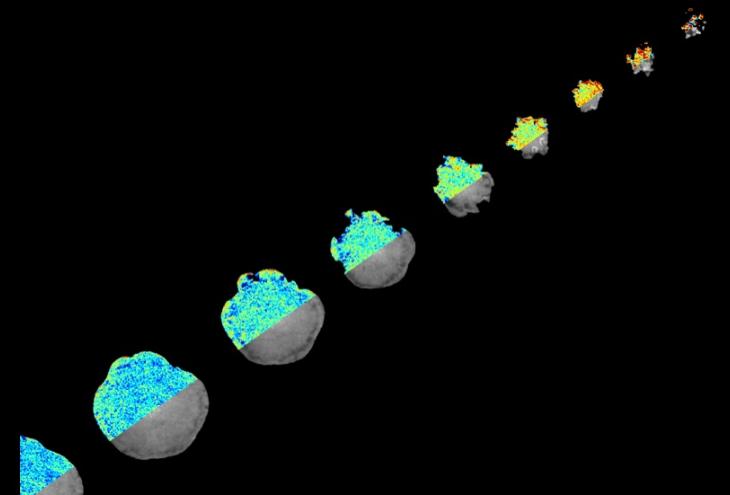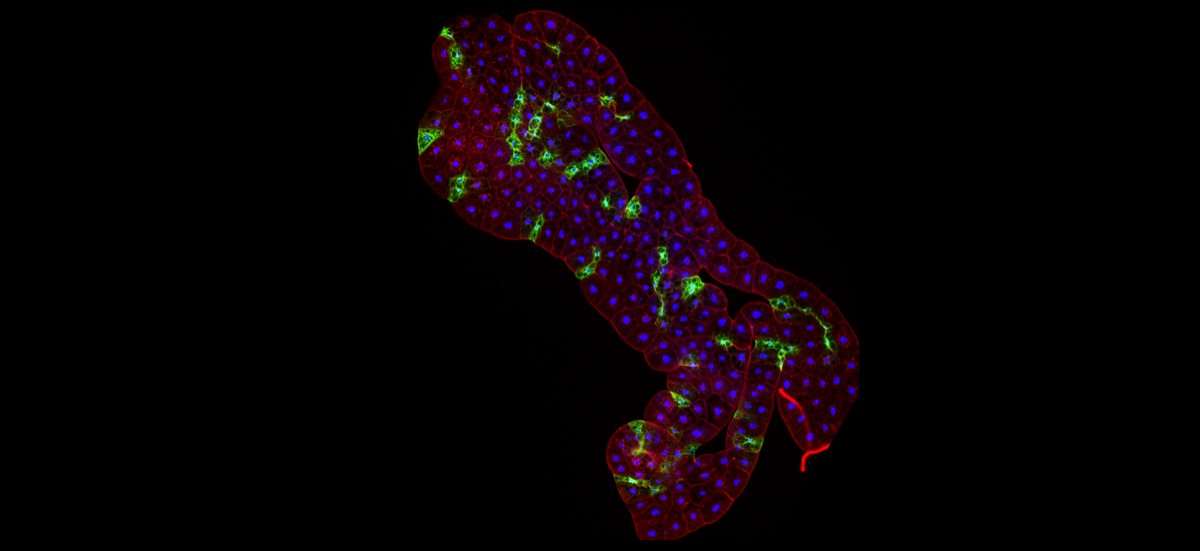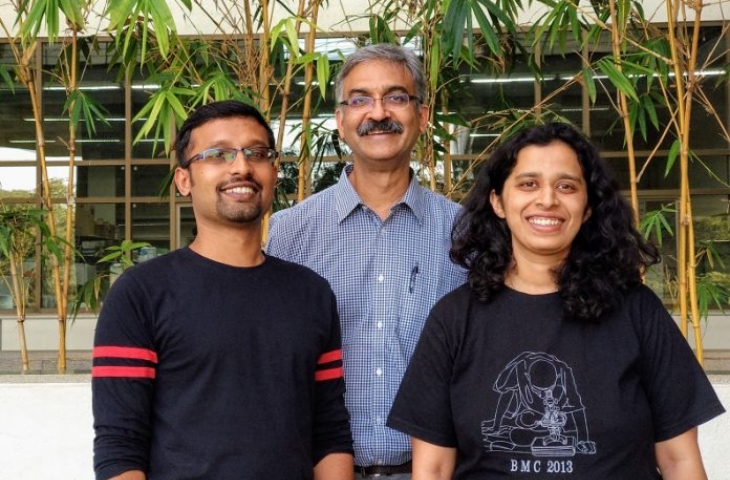-
Cell surface organization at the nanometer scale
How do cell membranes integrate mechanical and chemical signals in response to activated sensors? Satyajit Mayor’s group at the National Centre for Biological Sciences (NCBS), Bangalore, has published a new study that sheds light on this process. The team has shown that when a signal for cell migration activates sensors on the cell membrane, specific proteins are clustered together on the cell surface to form ‘nanodomains’. Nanodomain formation is crucial for cell migration, and involves both chemical and mechanical signals.
A battle rages on in silence. -
A matter of fine balance: electrical balance in the brain
Image: Despite more than a million fold difference in the light intensity, our brains enable us to see the same scene in broad daylight and a dim night by the process of normalization. This article shows how brains "can" perform normalization by precisely balancing two equal and opposite forces - excitation and inhibition.
Artist of the graphic: Hrishikesh Nambisan
-
A molecular rheostat for insulin signalling
A mutant fruitfly strain studied by researchers from the National Centre for Biological Sciences (NCBS), Bangalore, may hold the key to understanding what goes wrong with insulin signalling in type-2 diabetes. When raised on a high-sugar diet, normal flies show a 25% increase in blood sugar levels; but the mutant flies—which lack the enzyme PIP4K (short for phosphatidylinositol 5 phosphate 4-kinase)— have normal blood sugar levels when raised on a high-sugar diet.
-
Genomics uncovers the mystery of the magic drumstick tree - Moringa oleifera
Did you ever wonder why our grandmothers insisted on having a Tulsi plant (Holy Basil) in front of the house and a Moringa (Drumstick) tree in the backyard? Each and every part of the drumstick tree has a medicinal value and is a rich source of nutrients and minerals.
-
New hope in the pipeline for autistic individuals
Shashi (name changed) is an autistic eighteen year old. Today he is a calm and quiet young adult who responds when spoken to and does not have meltdowns. He is also very good at painting ,can sit for a long time while painting, and can participate in social events and community get togethers. As a two-year old, it was not so. Shashi’s nerves were always on edge and he rarely would sleep. While walking or playing, Shashi was oblivious to his surroundings and hurt himself many a time as he stumbled or hit objects around him.
-
A window into the mind: discovering how antipsychotic drugs affect the brain
Researchers from the National Centre for Biological Sciences (NCBS), Bangalore, have developed a mouse model for detecting cells that respond to antipsychotic drugs in live brain tissues. Using this, the team have also discovered that the antipsychotics Clozapine and Olanzapine affect ependymal cells—a class of brain cells responsible for producing cerebrospinal fluid—previously unknown to be affected by antipsychotics.
-
Flies release neuronal brakes to fly longer
For insects, flying is a swift way of getting around to find food, identify a mate and escape unfavourable conditions. While muscles provide the power for flying, it is the brain that coordinates strategic planning. For a hungry fly, this could mean using its powerful olfaction to sense the presence of food such as a rotten banana and then navigating the distance to reach it, which may require flying for several minutes or even an hour or more. How does the insect brain coordinate the timing for such long flight bouts?
-
Balancing act at the edge of cells: Study
We are made up of trillions of cells and they use endocytosis to take up nutrients and growth factors. Endocytosis is a process by which a cell makes small vesicles or bags to take in nutrients from outside environment. In order to maintain its shape and size, a cell has to maintain the area of its plasma membrane.
-
Mutations and fitness tradeoffs in bacteria
If you've ever trained for a track event, you know there are two ways to run. Training for a long distance running event means you have to run economically – wasted movement costs valuable energy. Sprinting, on the other hand, focuses on powerful movements made with intense effort.
-
NCBS team identifies a tiny molecule in rice that facilitated domestication from wild grass
The grains we eat, the flowers we cherish, fruits that we use as supplements, all came from plants that have been extensively modified from their original forms in a process called domestication. Domestication of plants and animals has been the subject of fascinating studies over the last many decades. Domestication encompasses a broad spectrum of evolutionary changes called as “domestication syndrome” that distinguish most crops from their progenitors. These changes may increase fitness of these plants under ideal man-made conditions, but likely decrease their fitness in the wild. Comp
















